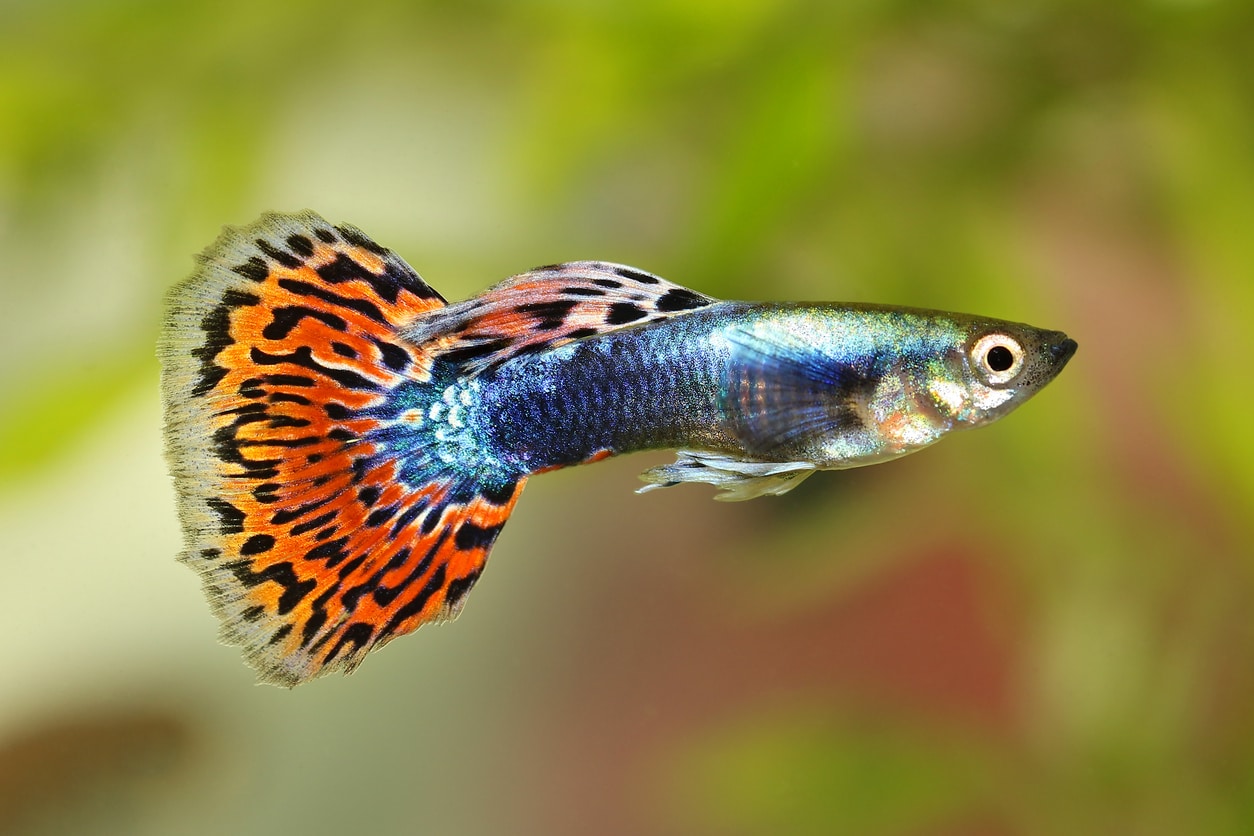Did you know
The guppy (Poeciliidae), sometimes known as the millionfish or rainbow fish, is a beautifully eye-catching family of fish known for their colourful bodies and decorative tailfins. There are over 200 different species of guppy, and you’ll find some of them right here at Blue Planet Aquarium including the Endler’s guppy (Poecilia wingei). Here we’ll find out a little more about this stunning species.
Species
What is a guppy fish?
Belonging to the Poeciliidae family, the name comes from the Greek poikilos which means ‘with a lot of colours’. With so many different types, the guppy is usually categorised according to their colour, body shape or tailfin shape. They are one of the most widely distributed tropical fish in the world!
First discovered in the 1860s, the guppy is named after Robert John Lechmere Guppy who found them in Trinidad. They can be any number of colours, with the male guppies typically appearing more vibrant than the females. Their tailfins can also have various shapes, with examples like fan tail, veil tail and flag tail. They don’t typically grow bigger than 6cm long, but what they lack in size, they make up for in spectacular colours and fanning tails!
Habitat
Guppies are tropical fish, which means you’ll find them in warmer waters around the world. They are native to the waters around South America and the Caribbean. Specifically, you’ll find them in the Amazon River, as well as freshwater streams around Trinidad and Tobago, Barbados and Venezuela.
While they are more prevalent in freshwater, guppies can also be found in brackish water, such as estuaries and mangroves.
Lifecycle
Guppies are known as livebearers, which means they retain the eggs inside their body and give birth to live young. This is unique to the Poeciliidae family, with other species in the family also giving birth in the same way. This includes mollies, swordtails and platies.
Males will chase their female counterparts to mate, and the female can produce young up to every 4 weeks. The gestation period of a guppy is around 4-6 weeks, after which the female can give birth to between 20-40 young, known as a fry. These young are independent from birth. Typically guppies can live up to an average of 2 years.
Beautiful guppies
While so many guppies are beautifully eye-catching, here are just a few examples that showcase just how unique and varied this family is.
Double swordtail guppy: They are mostly olive green in the wild, and have a beautiful tail that extends at the top and bottom into swordlike projections.
Delta or triangle guppy: This species has an incredibly large and flowing tail, and as a rule their colouring is two-tone from front to back – although the colours themselves can vary from bright green, purple, orange and even multicoloured.
Spear tail guppy: Easily recognisable, the spear tail guppy has an unusual tail with rounded edges that ends in a point, which is how it gets its name.
Snakeskin guppy: This type of guppy has a very distinct and unusual pattern, which makes them stand out beautifully.
Where can you find us?
Here at Blue Planet Aquarium, we have our very own guppy fish, which you can see for yourself at our Flooded Forest exhibit! This exhibit is designed to mimic their native habitat with a tropical climate and freshwater. You can also see black pacu, stingrays and arowanas in this exhibit too.






